For my upcycle project I decided to focus on mycelium. What is mycelium? Mycelium is the vegetative part of a fungus (aka mushroom roots). Mycelium is a key element of our ecosystem because it helps with decomposition and absorbs nutrients [1]. I learned about mycelium while working as a graduate student in the Living Matter Lab at ATLAS. In this lab, I was exposed to many different kinds of biodesign and sustainable materials. I was inspired by many different artists and companies making both functional and artistic pieces out of mycelium.
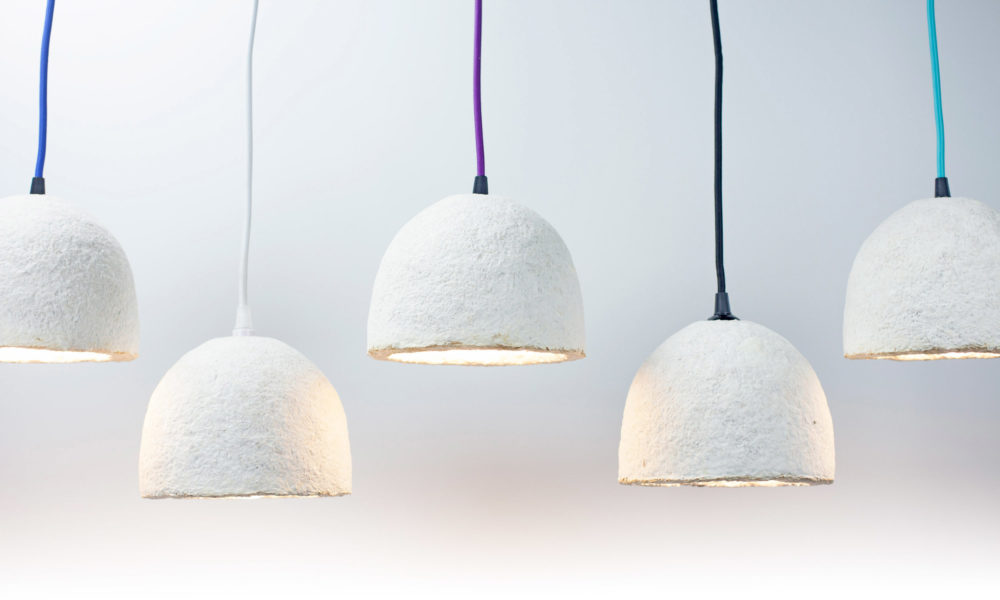 Lampshades from Ecovative Design [2]
Lampshades from Ecovative Design [2]
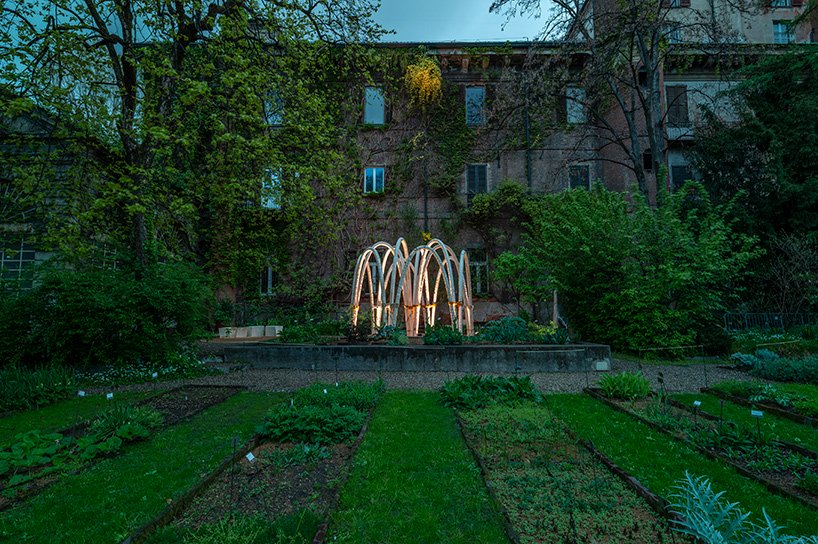 Architectural structures made by Carlo Ratti for Milan Design Week [3]
Architectural structures made by Carlo Ratti for Milan Design Week [3]
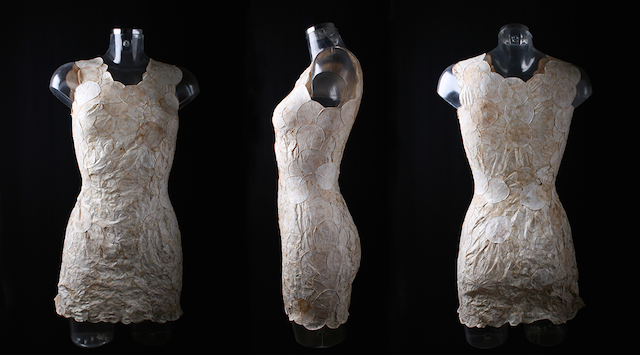 Dress from MycoTEX [4]
Dress from MycoTEX [4]
So far, I have successfully grown mycelium from a package of oyster mushrooms I purchased at the grocery store and used coffee grounds from Pekoe (coffee shop in the ATLAS building). This process included chopping the oyster mushrooms into small pieces and mixing them with the coffee grounds. I then sterilized plastic containers I found from various recycling bins around ATLAS, choosing clear takeout bowls and dried seaweed packages. Once my containers were set up, I filled them with the mushroom coffee mixture. I then covered each container with tin foil and placed them in an unused cabinet in the back of the Living Matter Lab. After not touching the cabinet for about a month and a half (I started growing these before winter break), I have happy, healthy mycelium!
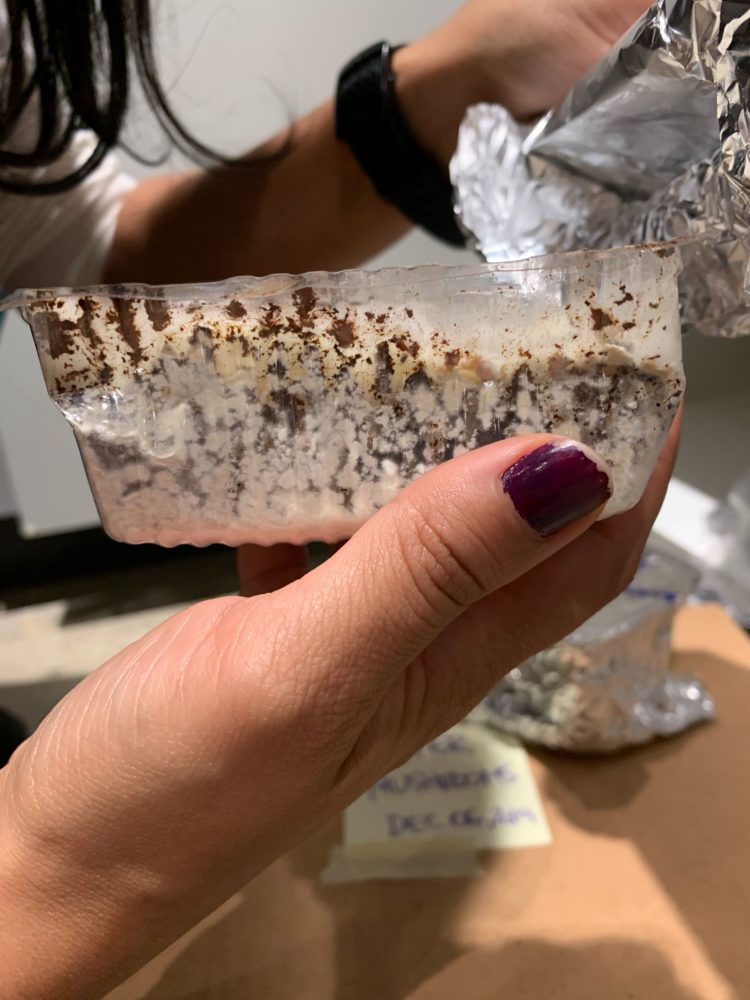
Side View of Mycelium
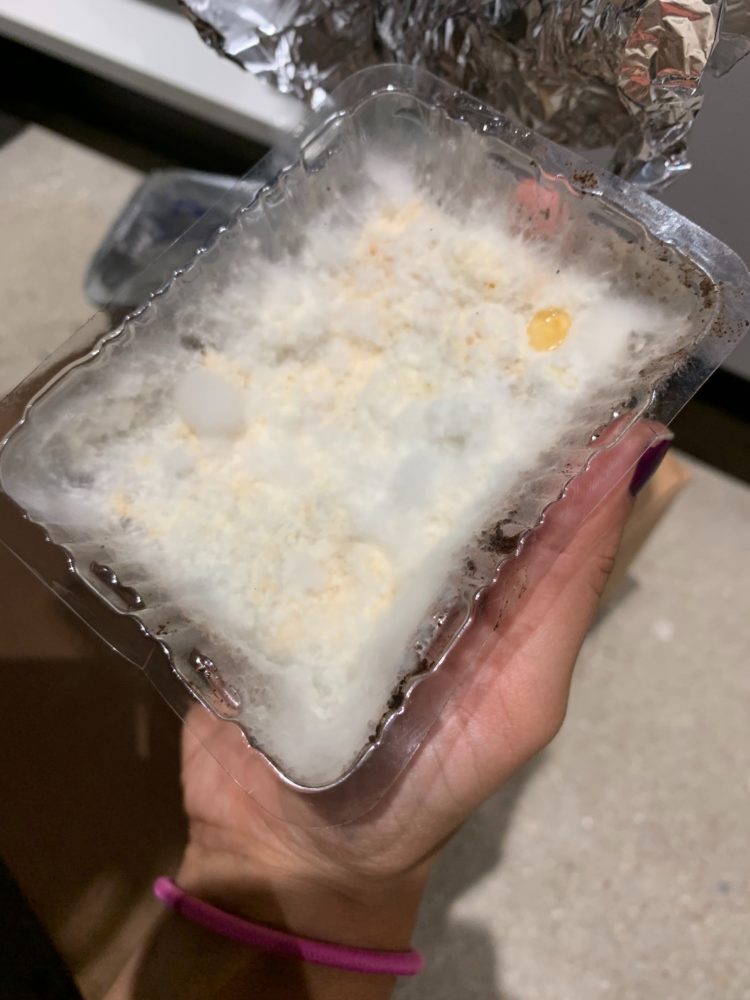
Top View of Mycelium
Moving forward I plan to make a minimalist pot for plants because I find it ironic to grow more plants in a plant pot. To do this I am going to create a new growing mixture of woodchips (from the BTU lab), all-purpose flour (from home), and water. I will then mix part of my mycelium into this mixture and place it into my sterilized mold (two plastic bowls I have at home). I will then place it all back into the cabinet and wait a week. Hopefully, within this week, the mycelium will grow all around the woodchips creating a solid white form. Once the form is done growing, I can take it out of the mold and bake it in the oven, effectively killing the living mycelium leaving a durable pot made from mushrooms. I am following the process detailed in an Instructables by ariellehein [5].
While this is not upcycling in a traditional sense (I had to buy mushrooms), all my other materials were reused and free (aka used coffee grounds from Pekoe, woodchips from the BTU trash, containers from the recycling bin, etc.). On another note, because of the time-consuming nature of growing mycelium and the possibilities of bad bacteria infecting the sample, I am choosing to keep my object simple and small, making the minimalist aesthetic perfect for this project.
References:
[1] W. Crosby, “What is Mycelium: Nature’s World Wide Web Underneath Our Feet”, Fungi Ally, Jun. 8, 2018. [Online]. Available: https://fungially.com/what-is-mycelium-natures-world-wide-web/. [Accessed Jan. 26, 2020].
[2] Ecovative Design, 2020. [Online]. Available: https://ecovativedesign.com/. [Accessed Jan. 26, 2020].
[3] P. Stevens, “carlo ratti unveils architectural structures made of mushrooms for milan design week”, designboom, Apr. 9, 2019. [Online]. Available: https://www.designboom.com/architecture/carlo-ratti-mycelium-circular-garden-structure-milan-design-week-04-09-2019/. [Accessed Jan. 26, 2020].
[4] “MycoTEX proof-of-concept”, NEFFA, 2020. [Online]. Available: https://neffa.nl/portfolio/mycotex/. [Accessed Jan. 26, 2020].
[5] Ariellehein, “Mycelial Forms”, Instructables, 2019. [Website]. Available: https://www.instructables.com/id/Mycelial-Forms/. [Accessed Jan. 26, 2020].

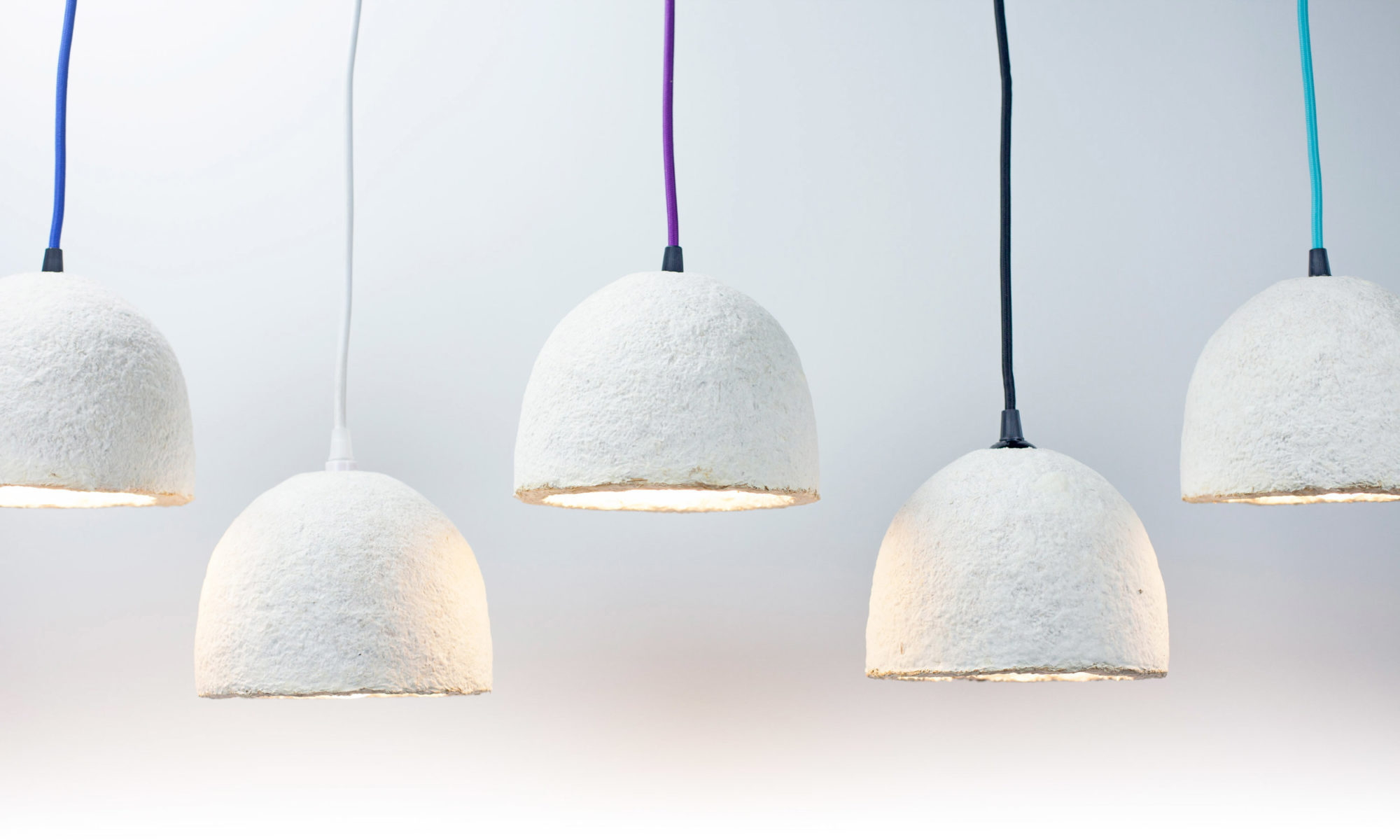
5 Comments. Leave new
Hi, Fiona,
I’m so excited for your project! After having seeing the mushroom growing in the lab, I can’t wait to see how the final product would turn out to be after drying. I think the idea is super sustainable, since you bought the mushroom for once, and it can be reproduced for almost no cost after that! (If I understood the process correctly? That the old mycelium continues to grow on the new mixture.) One thing that I’m curious about though, are you going to cut or drill on the dried mycelium to forming the pot design that you are going for? I’m wondering about how dense the dried mycelium would be during that process. Or I guess you can make a “mold” out of the aluminum toppings in such a way that would leave a hollow part in the mycelium once it finishes growing? Or are you going to shape the form of the mycelium before it’s dried? I’m just so curious now.
Anyway, good luck to the mushrooms!!! I can’t wait to see them soon in the dried form!! : )))
Best,
Xiang
Hey Fiona, it seems you have put a lot of thought into this post which I appreciate. I had never heard of structural design with mushrooms! I love the irony of a plant pot to grow other plants. My question/idea is can you add coloring to the mixture before you make it to give it whatever color do you want for your pot?
Hi Benjamin! I have seen other mycelium (artists? makers?) people color their mycelium with food dye and natural dyes from flowers. While this is very cool, I am personally very worried about contamination, so I am not going to pursue colors right now. I have thought about painting my pot/bowl after it has been baked and it is all done.
This is super neat and I’m excited to see how it turns out. My biggest question though is, do you know how long the pot will last? It seems like if its made out of biodegradable materials that it wouldn’t last for more than a year (or something, I have no idea how long things take to biodegrade). Also, could it get wet? Great idea and I’m so curious to see how it works out!!
Hi Bella! I do not know how long the pot will last. From what I have read, some companies have already started replacing wood in homes and furniture with mycelium. To me, this implies that mycelium is quite durable when it has been baked and compressed, but you never know until you know!